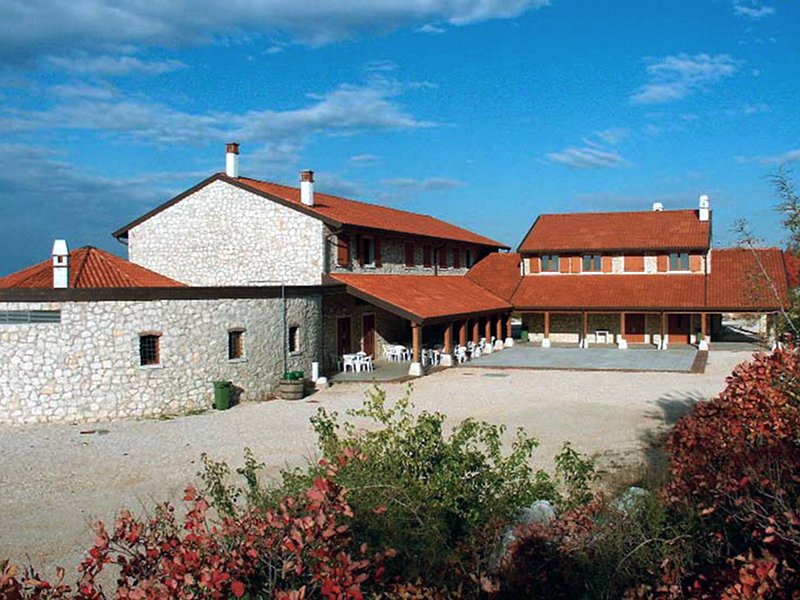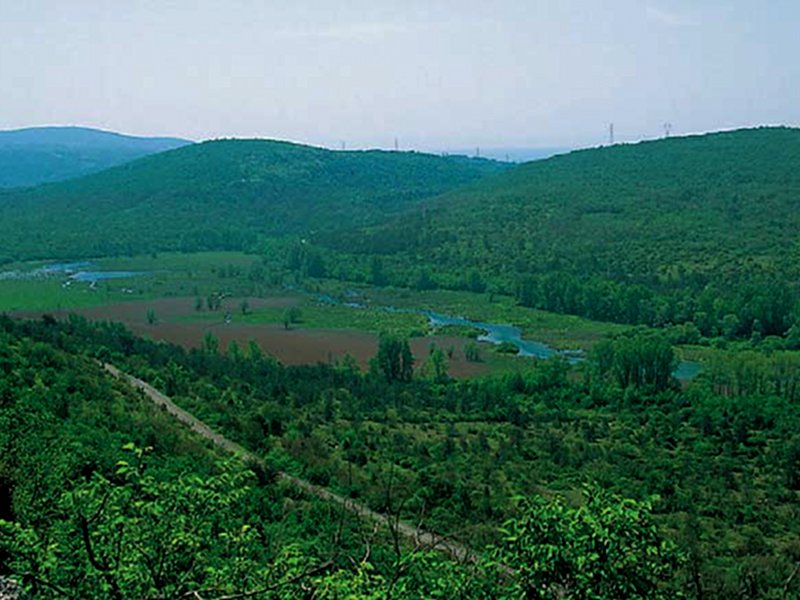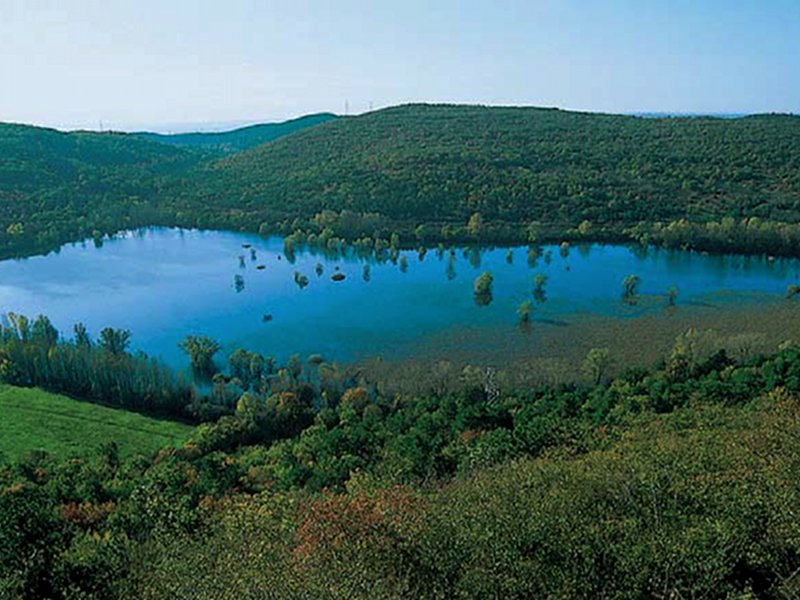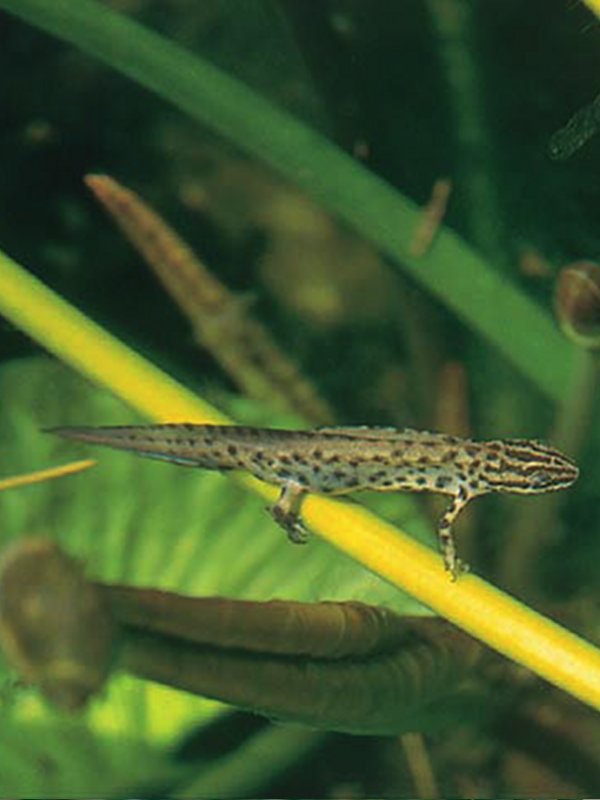Riserva naturale regionale laghi di Doberdo' e Pietrarossa
Protected Area
Identity Card
- Land Surface Area: 727.00 ha
- Regions: Friuli Venezia Giulia
- Provinces: Gorizia
- Municipalities: Doberdò del Lago, Monfalcone, Ronchi dei Legionari
- Establishment Measures: LR 42, art. 48 30/09/1996
- PA Official List: EUAP0983
- Park Authority: Comune di Doberdò del Lago
Further information: http://www.turismo.fvg.it
The Reserve
The Reserve includes the municipalities of Doberdò del Lago, Monfalcone and Ronchi dei Legionari, and it covers a surface of 726 hectares.
Near the built-up area of Doberdò del Lago - Doberdob, where once a limestone quarry was active, some works have been carried out to restore the old buildings, a visitor center with a nature-historical museum, a conference hall, a guest house and a refreshment point.
Even near the Pietrarossa lake a facility has been built to improve the use of this area: the Pietrarossa information point.
Environment
In the area there are two depressions where, in the rainy periods, the aquifer water collects and shapes the karst lakes of Doberdò and Pietrarossa. In the karst lakes the water level is variable, and flooding periods (spring and autumn) alternate with drying up periods (winter and summer). The Doberdò lake, together with the Cerknica lake in Slovenia, is one of the few karst lakes in Europe. The water level changes depending on the flow rate of the rivers Vipacco and Isonzo, whose waters flow into the lake through the subterranean system of the Karts region near Gorizia. The water comes out from the aquifer through the karst springs situated along the lake's western border. On the eastern border there are many ponors where water disappears and appears again after a short underground stretch to flow into the Pietrarossa lake. When the rivers Vipacco and Isonzo are dry, the water level decreases, and instead of the lake only some canals and puddles with a few-meters-large diameter remain. The biggest, Bezen, is 40 m wide. The second lake, the Pietrarossa Lake, is situated on a long-shaped alluvial belt. The water springs that originate the streams flowing all over the area are situated in the northwestern side, whereas the lake and the emissary stream extend in the southeastern side.
Further information
Vegetation and Flora
The vegetational landscape is characterized by the range and karst land with Chrysopogon gryllus and Centaurea cristata, as well as thermophil shrub formations with Jerusalem thorn (Paliurus spina-christi), and plants typical of the water and wet lands. Wide surfaces are covered with the typical karst woods mainly consisting of hop hornbeams and downy oaks, but also the sessile oaks and the turkey oak are present. Some areas have been planted with black pine (Pinus nigra), whereas the areas that are more subject to periodic floods are occupied by the riparian vegetation of willows and poplars. As far as the Doberdò Lake is concerned, especially in its southwestern side there is a thin riparian woody belt mainly consisting of Salix alba and Populus nigra (Salicetum albae), where, depending on the decreasing edaphic humidity, we can notice the Carex elata, the Cornus sanguinea and the Ulmus minor. In the Pietrarossa lake there are well developed willow woods with species of Salix cinerea and Frangula alnus (Salicetum cinereae). In the Doberdò Lake also a particular plant association characterized by showy flowers of Leucojum aestivum (Caricetum elatae) and the water vegetation (Potamogetonetum lucentis, Hottonietum palustris, Myriophyllo-Nupharetum) develop; there are also wide expanses of common reed (Phragmitetum australis). Within the hydrophilic vegetation there is the plant association of the Cladietum marisci, mainly consisting of saw-sedge - a big grass with sharp leaves typical of ponds and marshes, which can be usually found in the discharge point of ground water - and the Serratulo-Plantaginetum, a hygrophilous grassland which develops on the clayey-sandy grounds subject to periodic floods and summer drought, whose northernmost limit is situated in the Pietrarossa Lake.
Further info
Fauna
The particular hydrology makes the life possible for those fish communities able to withstand the water's temperature variations and the marked reduction in the oxygen content. In fact, the Doberdò lake is mainly inhabited by a fish community almost only consisting of Cyprinidae, that is typical of slow waters or lakes.
In the areas situated near the springs several species can be observed: the European bullhead (Cottus gobio) and the Common minnow (Phoxinus phoxinus), that although they are mostly eurythermic and stand the low rates of oxygen, they need a certain abundance of water and slight currents. Furthermore, there are the Rutilus erythrophthalmus, the tench (Tinca tinca), the common rudd (Scardinius erythrophthalmus), the spined loach (Cobitis taenia), the Padogobius martensii and the european eel (Anguilla anguilla).
In the Doberdò Lake area there is also the olm (Proteus anguinus), an amphibian living in the caves which is endemic to the Karst region, and which has been also sighted on the occasion of the aquifer emergency. Among the other amphibians there are also the Salamandra salamandra, Triturus carnifex, Triturus vulgaris, Bufo bufo, Bombina variegata, Rana dalmatina, Rana esculenta. Among the snakes: Natrix natrix, Natrix tessellata, Coluber viridiflavus, Elaphe longissima and the horned viper. Among the lizards there are the Algyroides nigropunctatus, Podarcis melisellensis fiumana, Podarcis muralis and the Lacerta bilineata.
Further info










